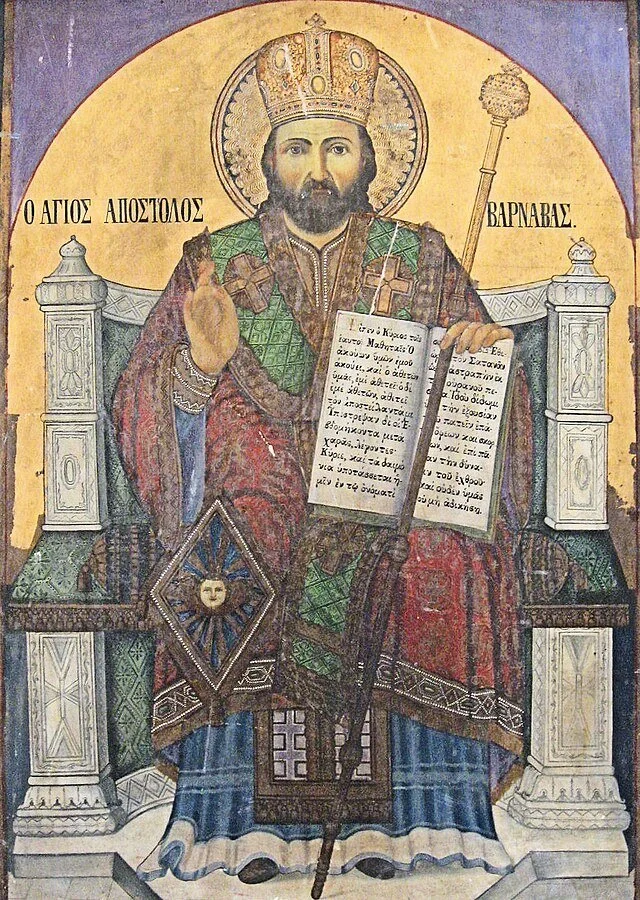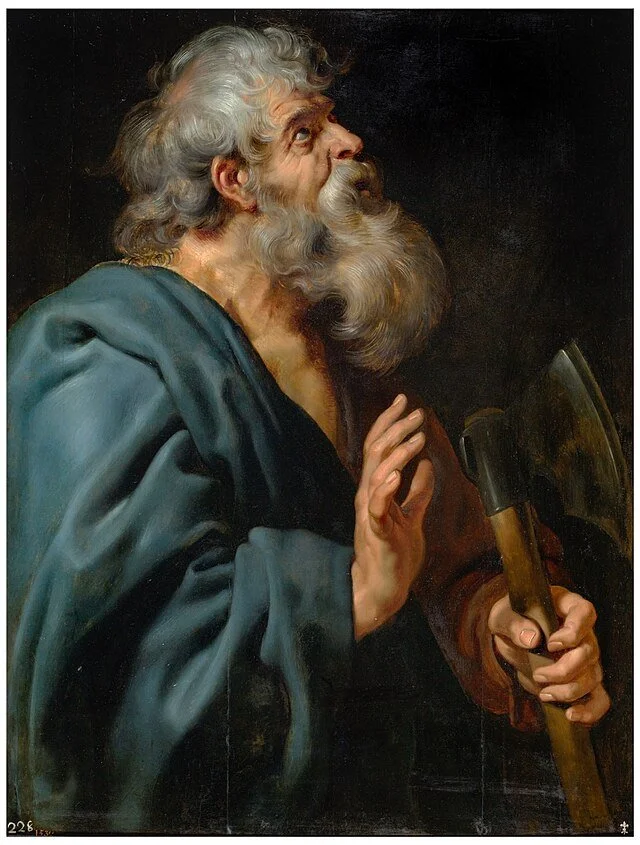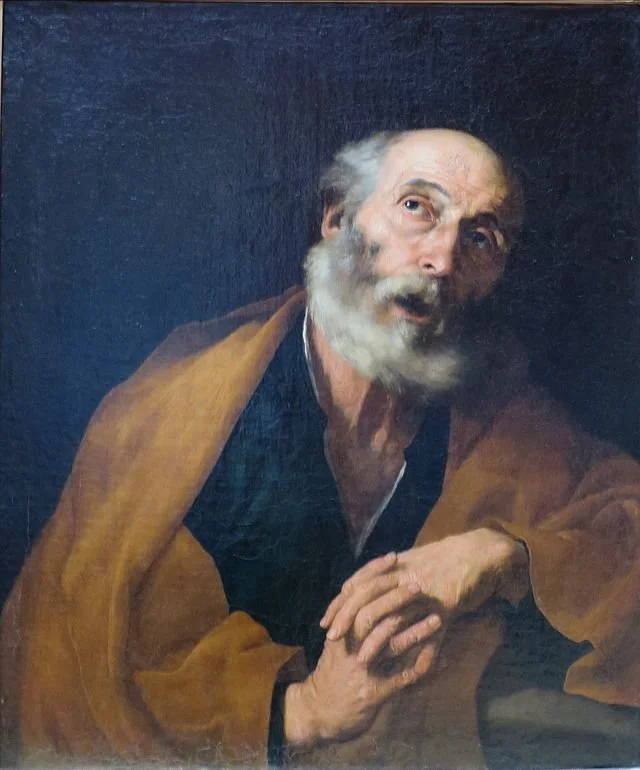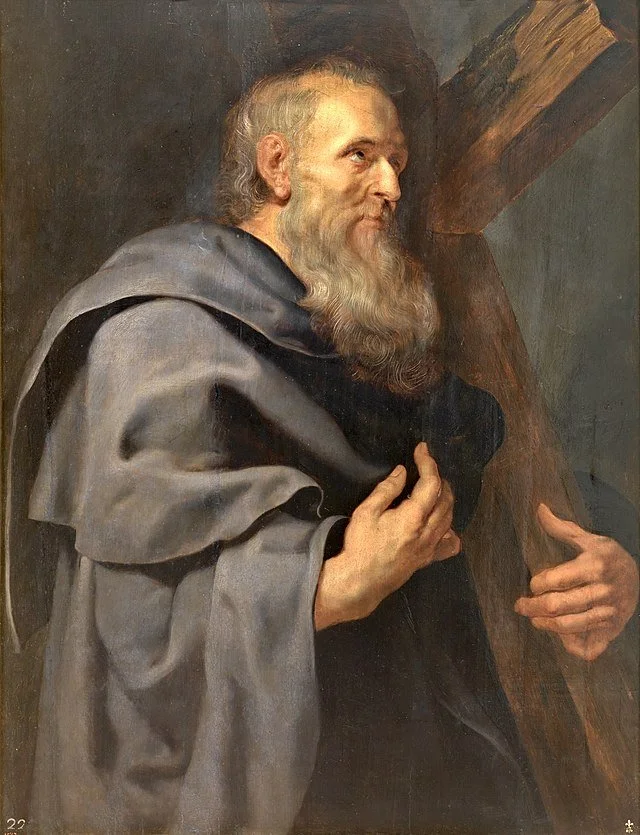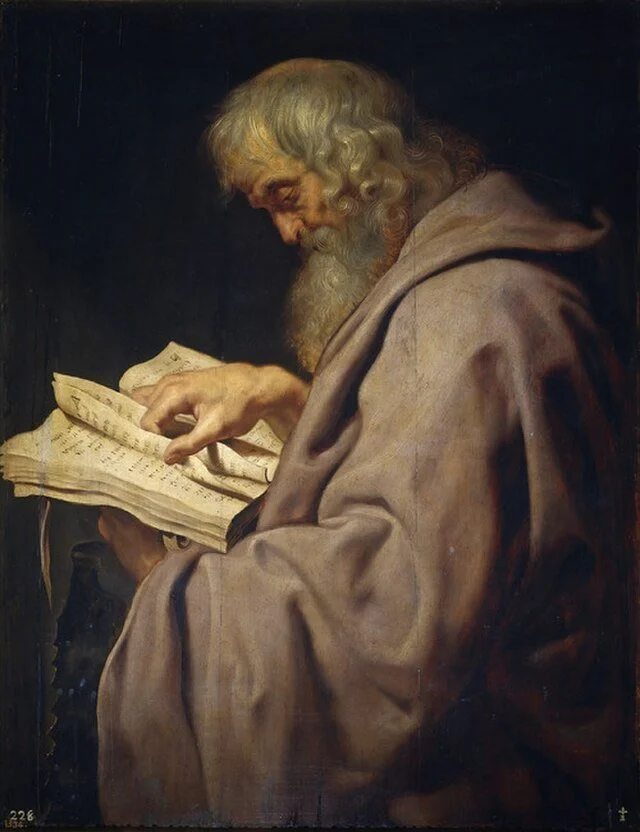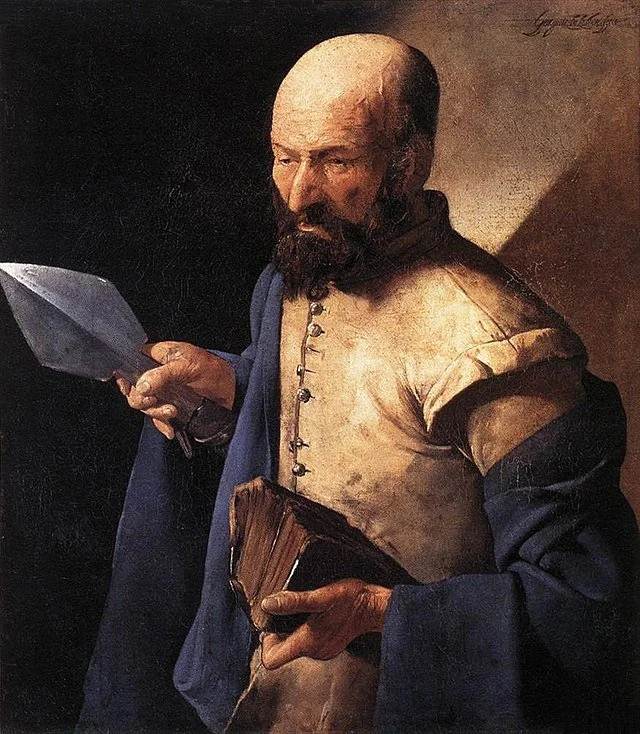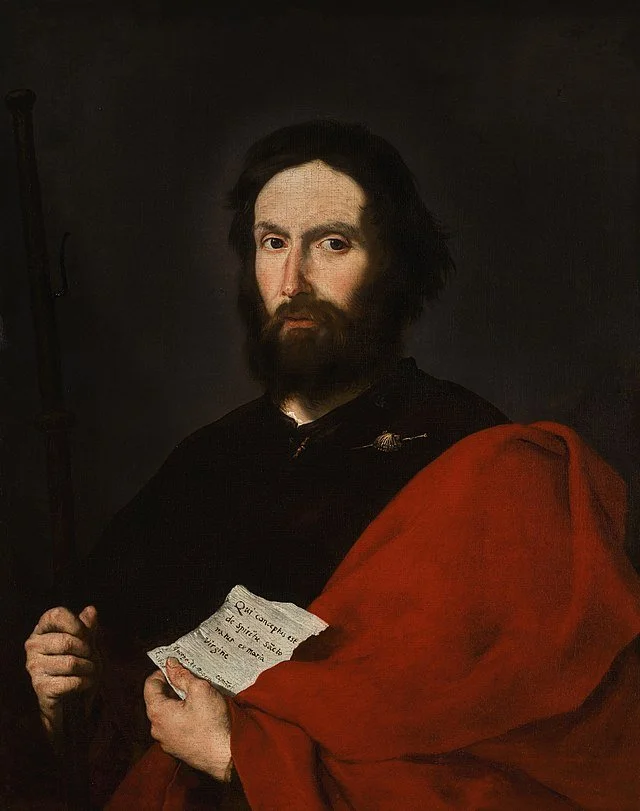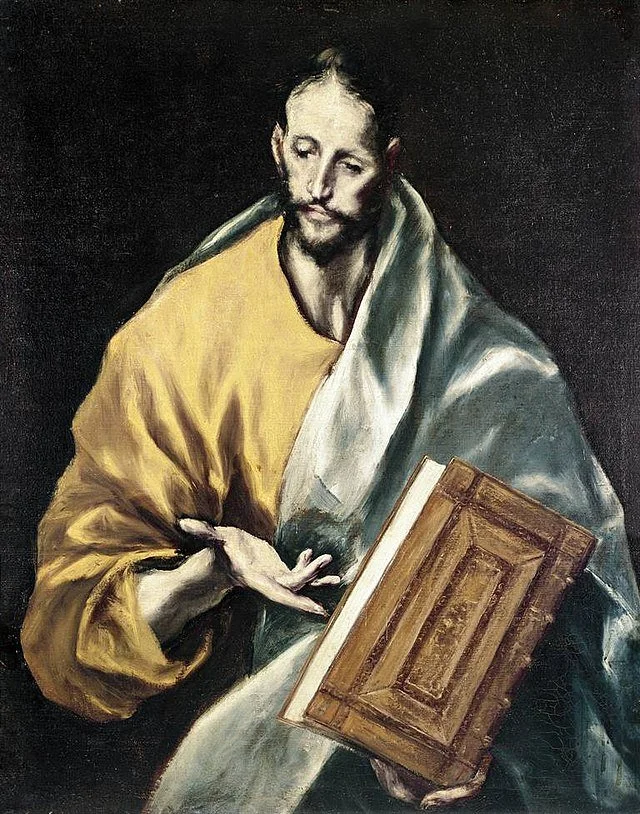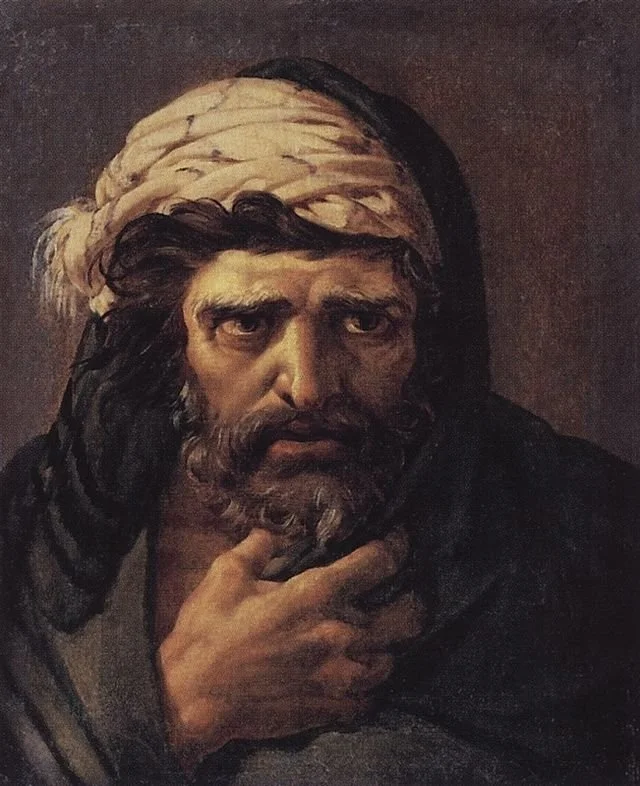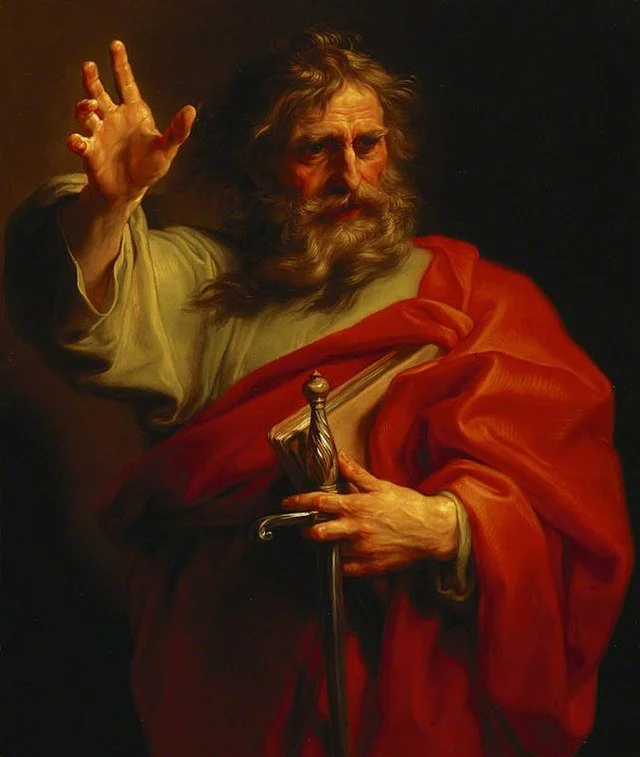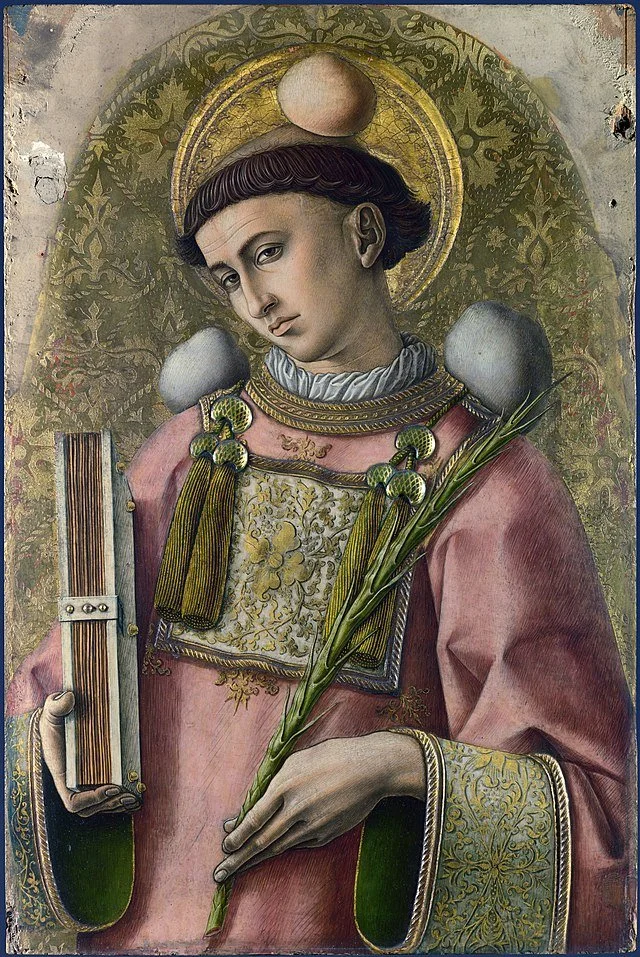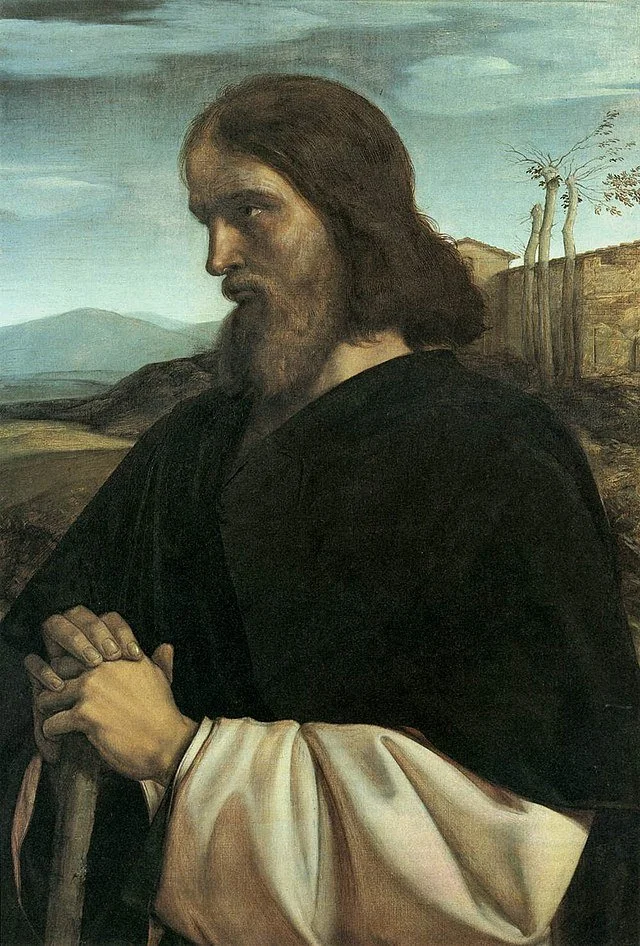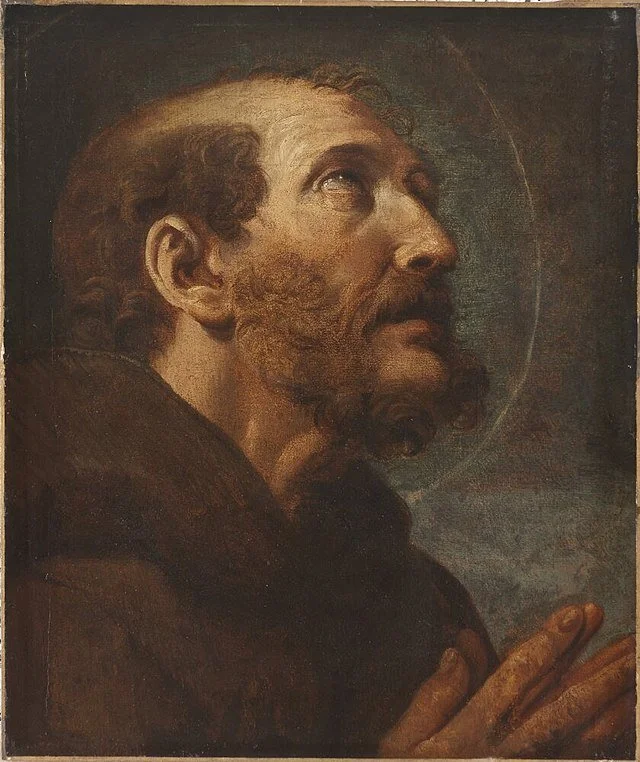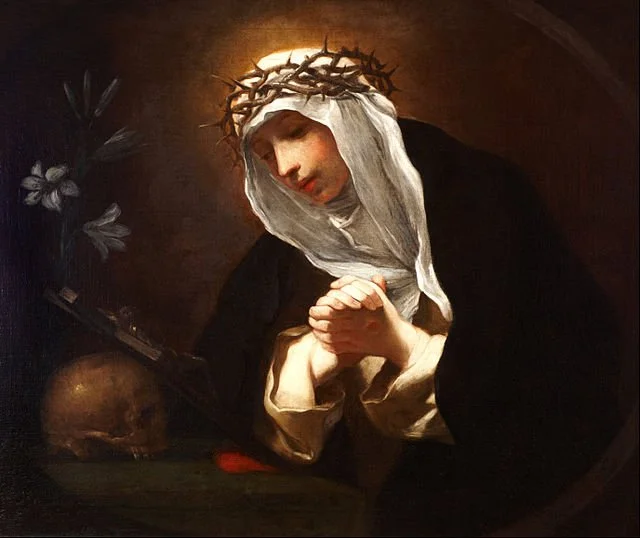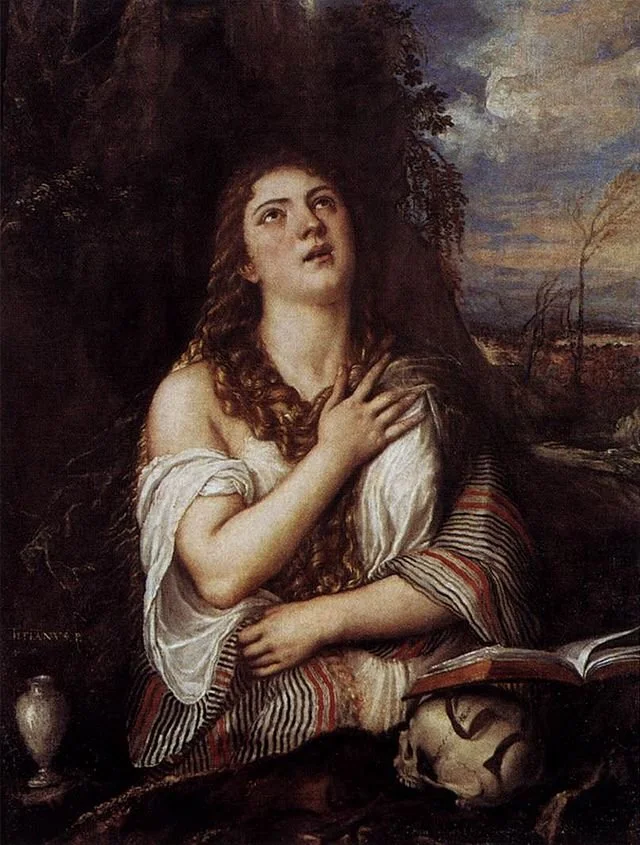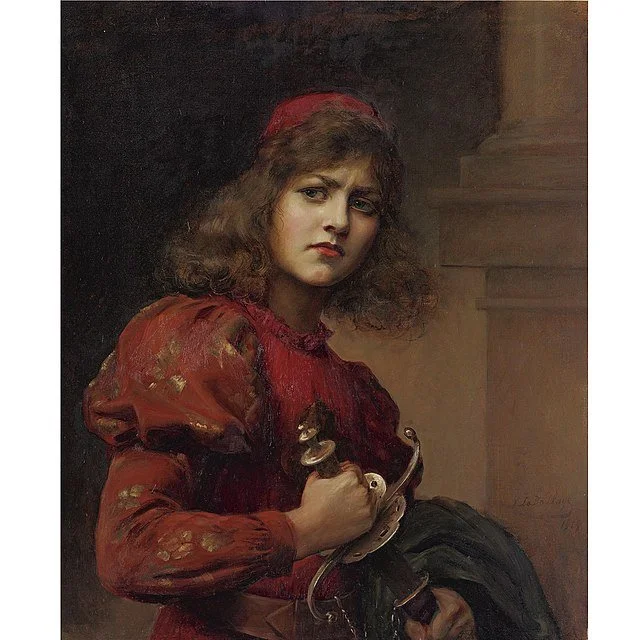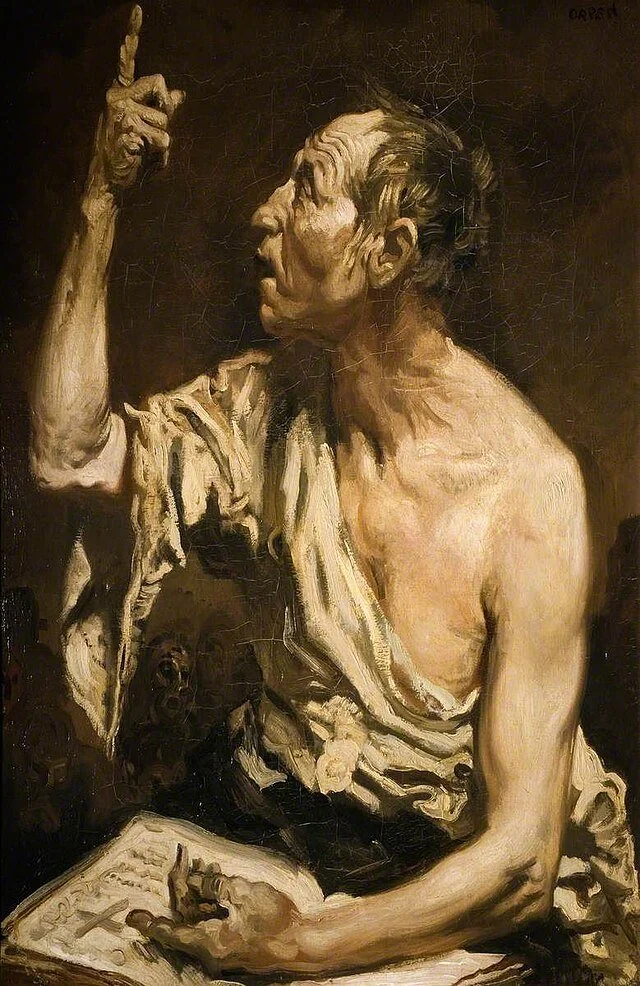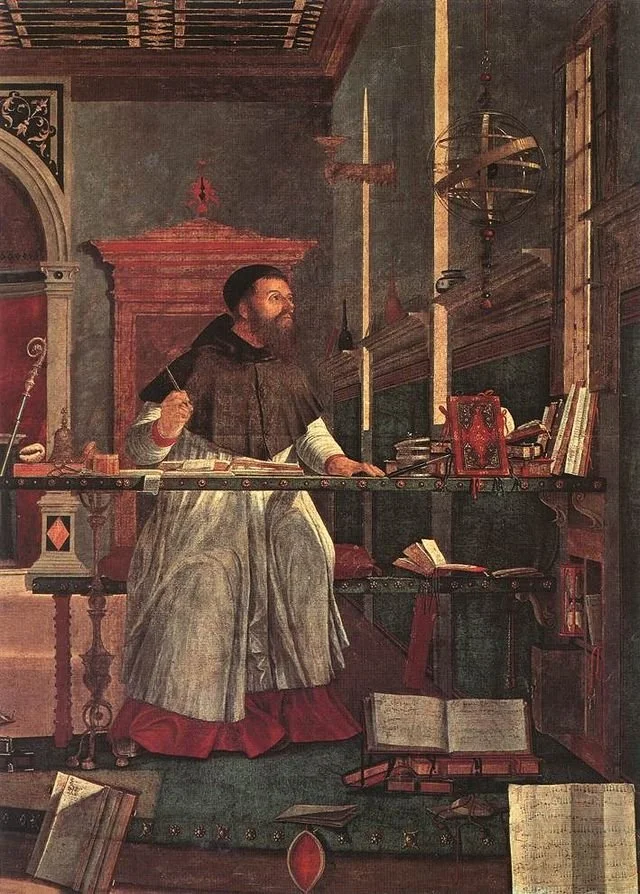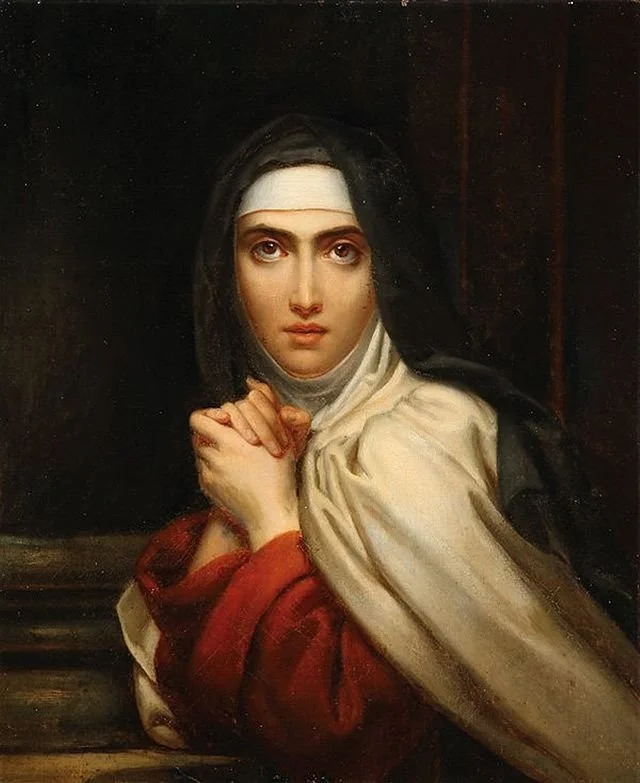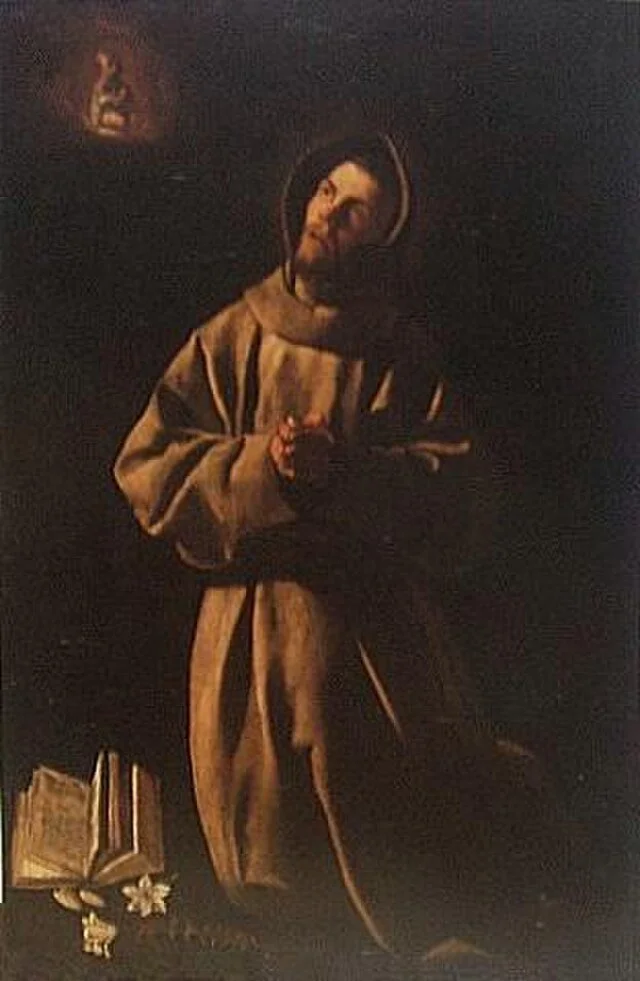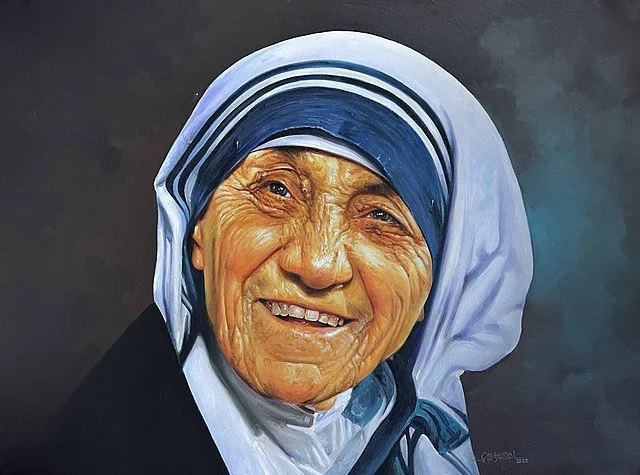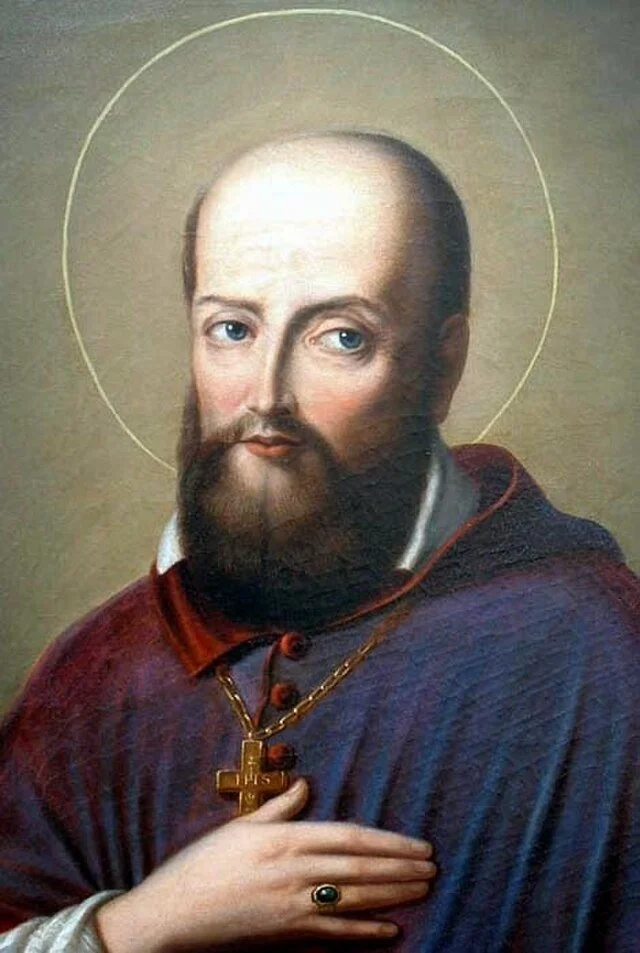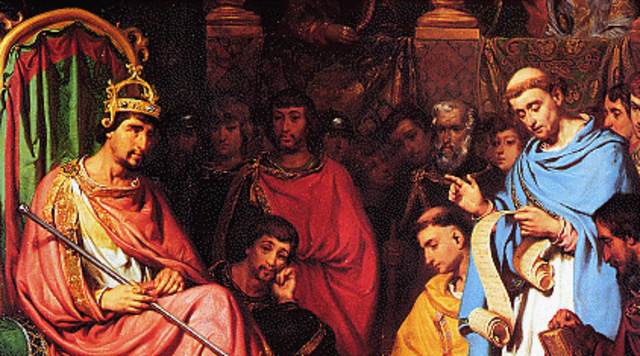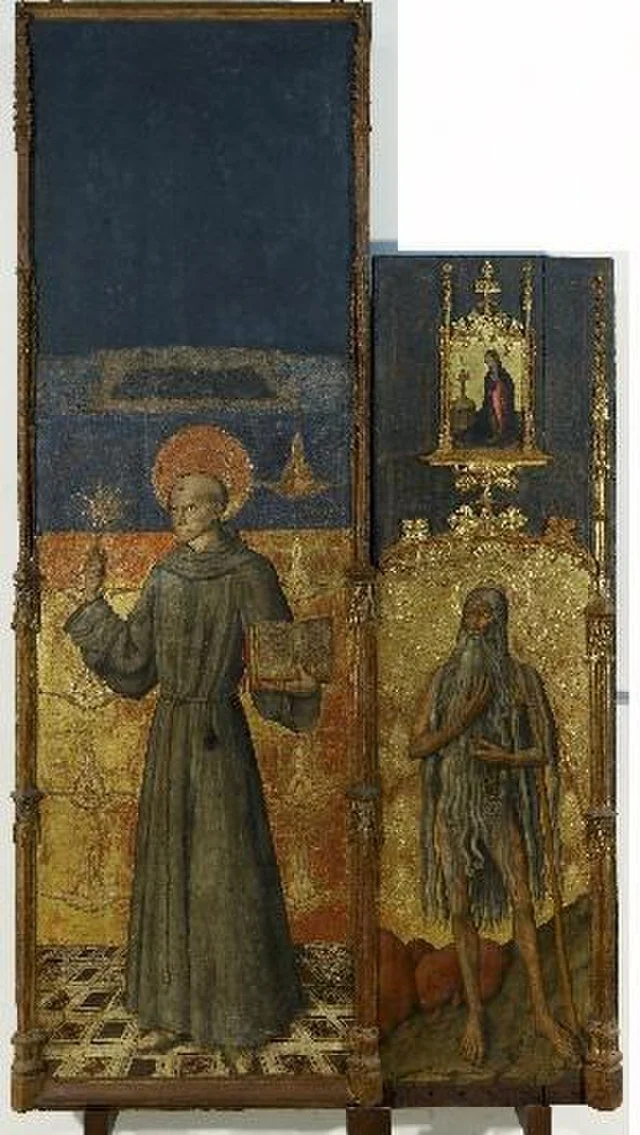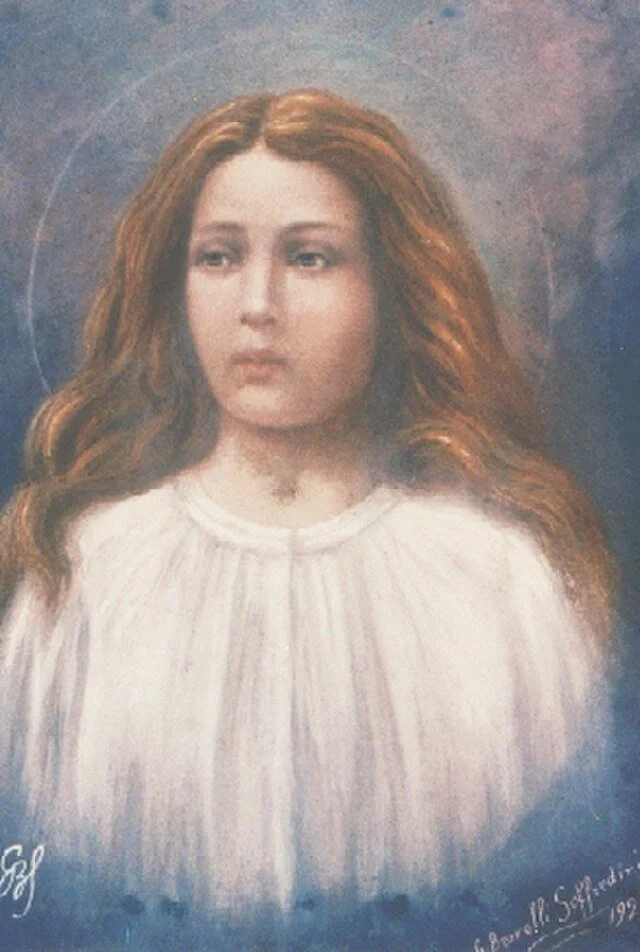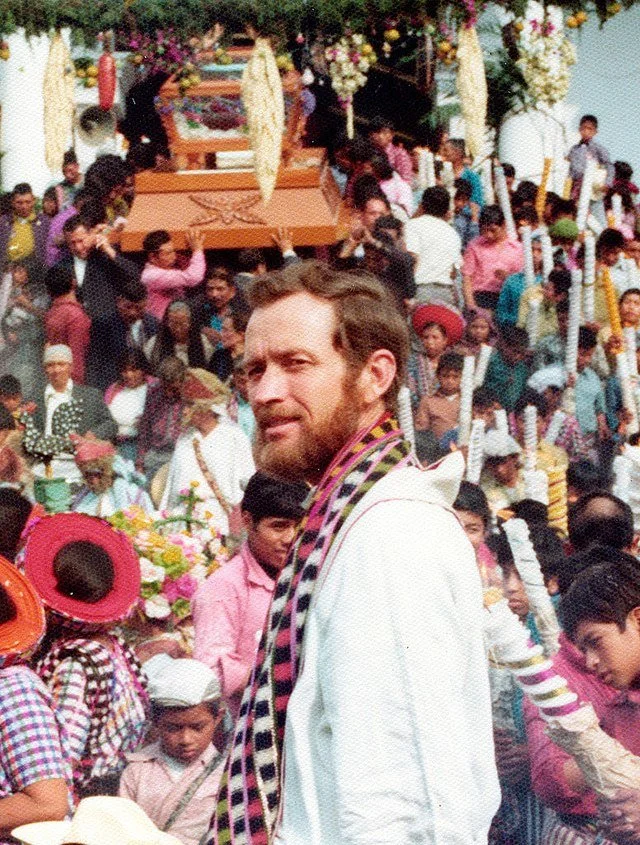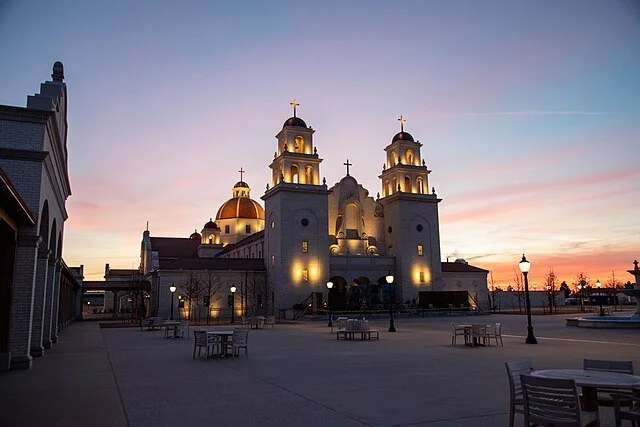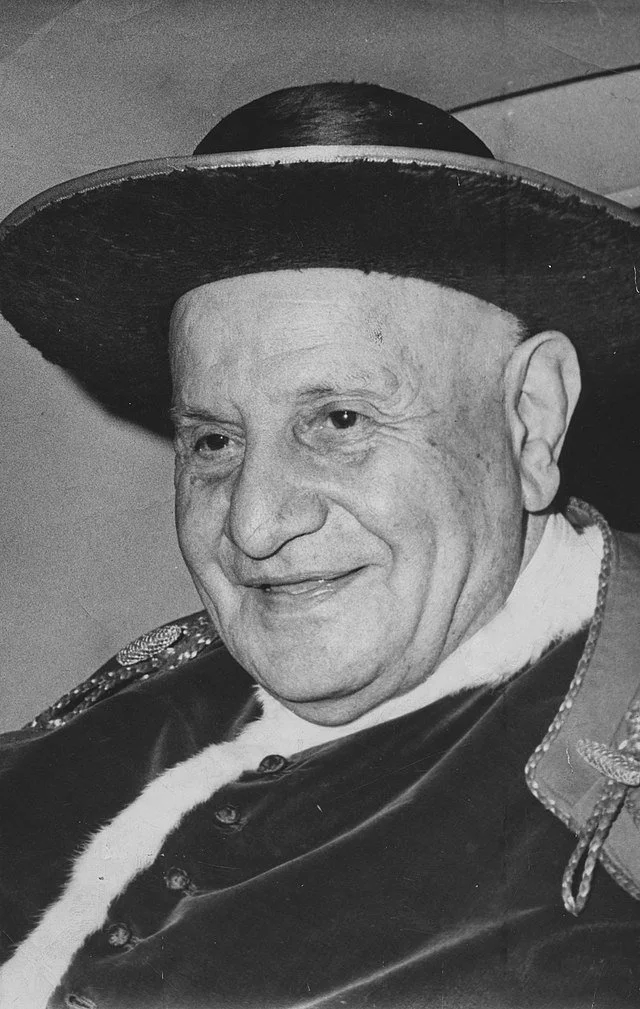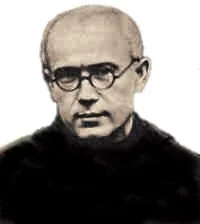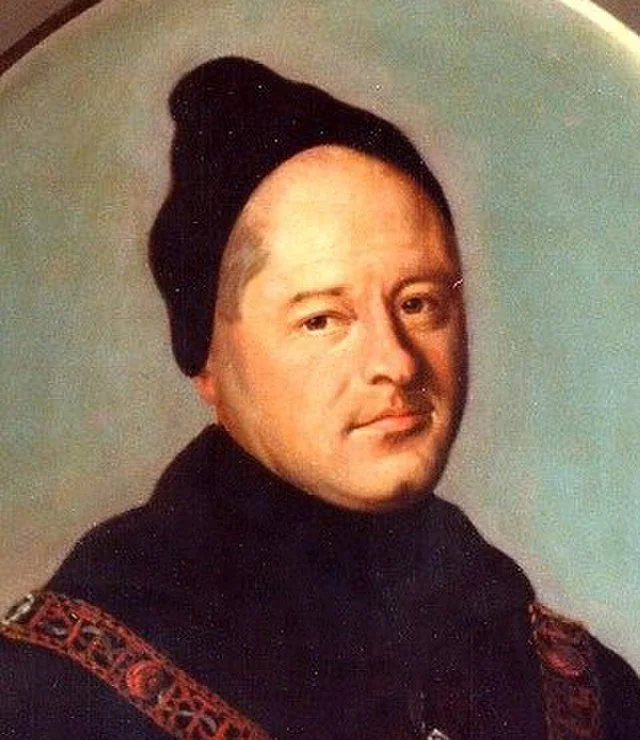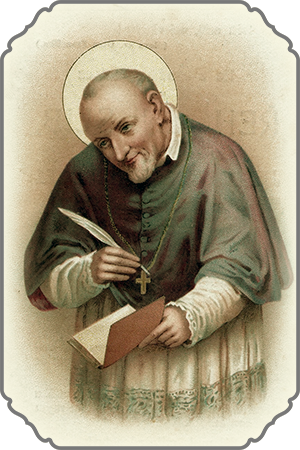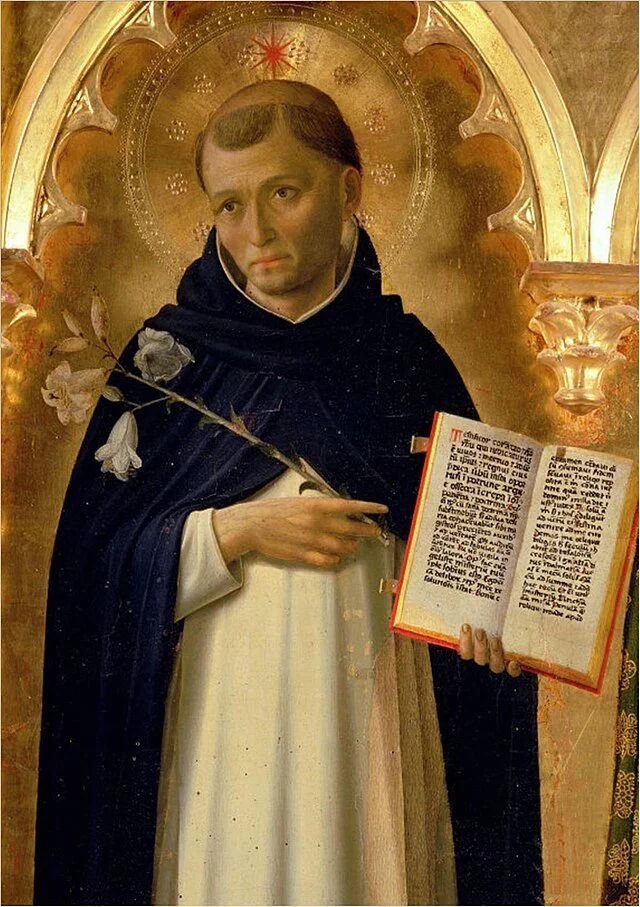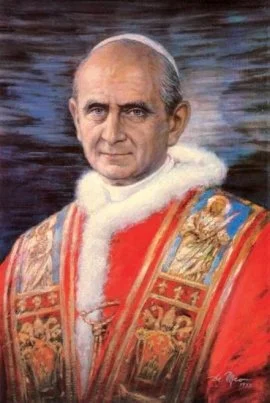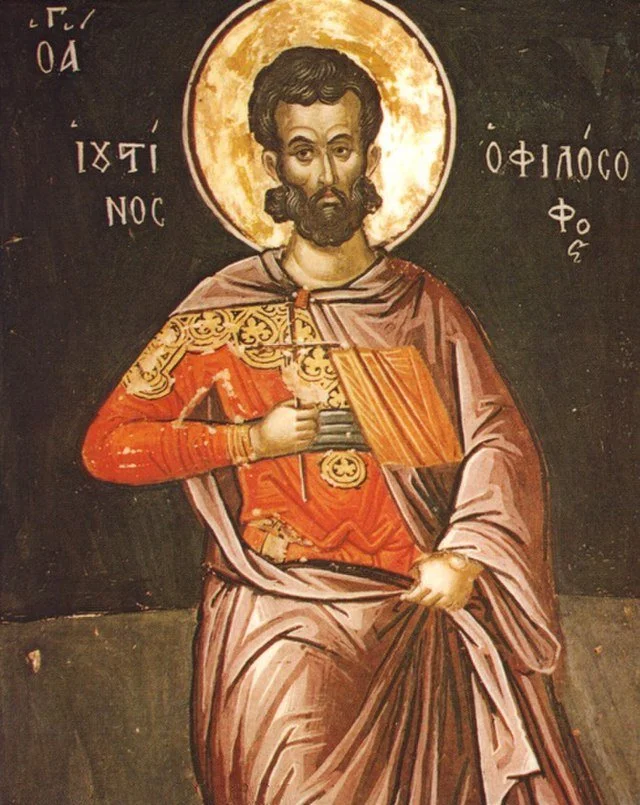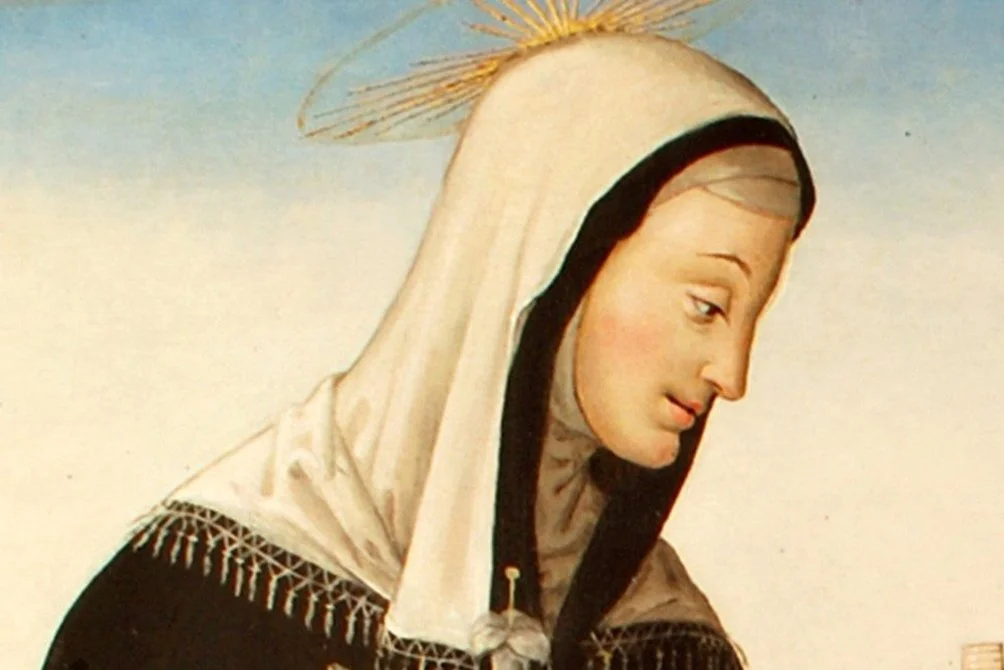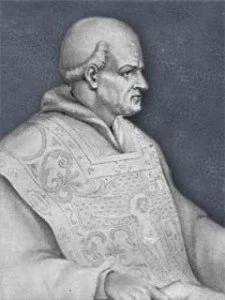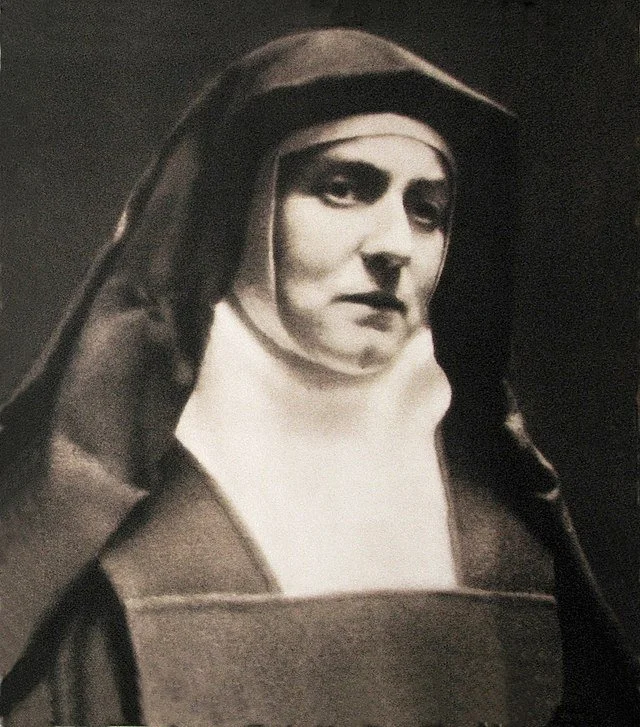What is a Saint & What is a Martyr
Saint Stephen - First Martyr
Early on the term became restricted to men and women of eminent holiness of life. In its strictest ecclesiastical usage it applies only to those who have distinguished themselves by heroic virtue and who, after the scrutiny of the Church, have been declared saints by a solemn judgment of the pope. The juridical consequence of such declaration entitles the person to receive general veneration (not adoration) in the Universal Church. The earliest class of saints to receive distinct recognition was the martyrs. The name confessors as in confessor of the faith originally applied to those who evinced signal courage and constancy in professing the faith, but now refers to male saints who are not martyrs or sufferers for the faith. Women are venerated either as virgins, virgin-martyrs, or as widows.
Romans 5:7:
Saint Paul states, "Very rarely will anyone die for a righteous person, though for a good person someone might possibly dare to die".
ST. ANDREW THE APOSTLE
The first Apostle. Fisherman by trade. Brother of Simon Peter. Follower of John the Baptist. Andrew went through life leading people to Jesus, both before and after the Crucifixion. Missionary in Asia Minor and Greece, and possibly areas in modern Russia and Poland. Martyred on an saltire (x-shaped) cross, he is said to have preached for two days from it.
Martyr
Andrew had converted multitudes to Christianity throughout the Mediterranean, including the wife of a Roman provincial governor in southern Greece; the governor, in turn, immediately ordered Andrew to be scourged and then crucified.
According to legend, Andrew's last words were: “Cross, sanctified by the body of Christ. Good Cross, long desired always, I loved you and wished to embrace you. Welcome me and bring me to my master.”
ST. BARNABAS THE APOSTLE
Levite Jewish convert, coming to the faith soon after Pentecost, taking the name Barnabas. Though not of the chosen Twelve Apostles, Barnabas is mentioned frequently in the Acts of the Apostles, is included among the prophets and doctors at Antioch, and is considered an Apostle. Companion of Saint Paul who introduced him to the Apostles. Like Paul, Barnabas believed in the Church‘s mission to Gentiles, and worked with him in Cyprus and Asia, but split with him over a non-theological matter. Evangelized in Cyprus with Saint Mark. Founded the Church in Antioch. Subject and possible author of some apocryphal works.
Martyr.
It relates that certain Jews coming to Syria and Salamis, where Barnabas was then preaching the gospel, being highly exasperated at his extraordinary success, fell upon him as he was disputing in the synagogue, dragged him out, and stoned him to death.
ST. BARTHOLOMEW THE APOSTLE
(Most scholars today identify Bartholomew as Nathanael)
One of the Twelve Apostles. Probably a close friend of Saint Philip; Bartholomew’s name is always mentioned in the Gospels in connection with Philip, and it was Philip who brought Bartholomew to Jesus. May have written a gospel, now lost; it is mentioned in other writings of the time. May have preached in Asia Minor, Ethiopia, India and Armenia; some one did, leaving behind assorted writings, and local tradition says it was Bartholomew.
Martyr
Azerbaijani Christians believe that in the area near the Maiden Tower, the apostle Bartholomew was crucified and killed by pagans around 71 AD.
ST. JOHN THE APOSTLE
Son of Zebedee and Salome. Fisherman. Brother of Saint James the Greater, and called one of the Sons of Thunder. Disciple of Saint John the Baptist. Friend of Saint Peter the Apostle. Called by Jesus during the first year of His ministry, and traveled everywhere with Him, becoming so close as to be known as the beloved disciple. Took part in the Last Supper. The only one of the Twelve not to forsake the Saviour in the hour of His Passion, standing at the foot of the cross. Made guardian of Our Lady by Jesus, and he took her into his home. Upon hearing of the Resurrection, he was the first to reach the tomb; when he met the risen Lord at the lake of Tiberias, he was the first to recognize Him.
During the era of the new Church, he worked in Jerusalem and at Ephesus. During Jesus’ ministry, he tried to block a Samaritan from their group, but Jesus explained the open nature of the new Way, and he worked on that principle to found churches in Asia Minor and baptizing converts in Samaria. Imprisoned with Peter for preaching after Pentecost. Wrote the fourth Gospel, three Epistles, and possibly the Book of Revelation. Survived all his fellow apostles.
John the Apostle is traditionally believed to have died of natural causes at a very old age. He lived long enough to be the only apostle who did not die as a martyr, and he passed away in Ephesus, likely after AD 98.
ST. THADDEUS “JUDE'“ THE APOSTLE
Son of Cleophas, who died a martyr, and Mary who stood at the foot of the Cross, and who annointed Christ’s body after death. Brother of Saint James the Lesser. Nephew of Mary and Joseph; blood relative of Jesus Christ, and reported to look a lot like him. May have been a fisherman.
Wrote the canonical Epistle named for him. Preached in Syria, Mesopotamia, and Persia with Saint Simon. Tradition says that he and Saint Bartholomew were among the first to bring Christianity to Armenia. Jude was known to have the gift of healing, and to serve as an exorcist; he could exorcise pagan idols, which caused the demons to flee them and the statues to crumble.
His patronage of lost or impossible causes traditionally derives from confusion by many early Christians between Jude and the traitor Judas Iscariot; not understanding the difference between the names, they never prayed for Jude’s help, and devotion to him became something of a lost cause.
Martyr
Saint Thaddeus, also known as Saint Jude, is believed to have died a martyr's death, likely around the first century AD. Tradition holds that he was clubbed to death and then beheaded. While the exact location of his death is uncertain, it's thought to have been in what is now Syria, possibly in Persia.
ST. MATTHIAS THE APOSTLE
Apostle. As he could bear witness to the Resurrection of Jesus, he was chosen to replace Judas Iscariot. Preached the Gospel for more than 30 years in Judea, Cappadocia, Egypt and Ethiopia. Remembered for preaching the need for mortification of the flesh with regard to all its sensual and irregular desires.
After receiving the Holy Spirit with the other apostles on the day of Pentecost, he left to preach the gospel in Judea and Colchis
Martyr
St.Matthias is traditionally said to have been martyred by stoning and then beheading, though another tradition suggests he died of old age in Jerusalem.
ST. PETER THE APOSTLE
Professional fisherman. Brother of Saint Andrew the Apostle, the man who led him to Christ. Apostle. Renamed “Peter” (rock) by Jesus to indicate that Peter would be the rock-like foundation on which the Church would be built. Bishop. First Pope. Miracle worker.
St. Peter, one of Jesus's 12 Apostles, is considered the first Pope by the Catholic Church and is a prominent figure in early Christianity. He was the first to recognize Jesus as the Messiah and played a leading role in spreading the Gospel after Jesus's ascension. He is also associated with miraculous feats and the establishment of the Church in Rome.
Martyr
His execution was ordered by the Roman Emperor Nero, who blamed the city's Christians for a terrible fire that had ravaged Rome. Peter requested to be crucified upside down, as he felt unworthy to die in the same manner as Christ.
ST. PHILIP THE APOSTLE
Disciple of Saint John the Baptist. Convert. One of the Twelve Apostle. Brought Saint Nathanael to Christ. Confidant of Jesus. Little is known about him, but scriptural episodes give the impression of a shy, naive, but practical individual. Preached in Greece and Asia Minor.
He also participated in the miracle of the loaves and fishes, and later, according to tradition, preached in Greece, Syria, and Phrygia.
Martyr
Philip and Bartholomew were then crucified upside-down, and Philip preached from his cross. As a result of Philip's preaching the crowd released Bartholomew from his cross, but Philip insisted that they not release him, and Philip died on the cross.
ST. SIMON THE APOSTLE
Apostle. Called the Cananean or Zealot because of his zeal for the Jewish law; he was not from Cana, nor a member of the Zealot party. Like all the Apostles, he was a convert, and was trained by Saint Peter the Apostle. Evangelized in Egypt and Mesopotamia, though there are traditions of him being in several other locations. He was a martyr for the faith, but several places claim to have been the site of that, too.
Martyr
It was in Persia that Simon reportedly joined the apostle St. Jude, known as Jude Thaddeus, where they were both martyred. Simon was said to have died from being cut in half with a saw, which is why he is often pictured with a saw in iconographic imagery.
ST. THOMAS THE APOSTLE
He was ready to die with Jesus when Christ went to Jerusalem, but is best remembered for doubting the Resurrection until allowed to touch Christ’s wounds. Preached in Parthia, Persia and India, though he was so reluctant to start the mission that he had to be taken into slavery by a merchant headed that way. He eventually gave in to God‘s will, was freed, and planted the new Church over a wide area. He formed many parishes and built many churches along the way. An old tradition says that Thomas baptised the wise men from the Nativity into Christianity.
Martyr
The king, Misdeus (or Mizdeos), was infuriated when Thomas converted the queen Tertia, the king's son Juzanes, sister-in-law princess Mygdonia and her friend Markia. Misdeus led Thomas outside the city and ordered four soldiers to take him to the nearby hill, where the soldiers speared Thomas, killing him.
ST. JAMES THE GREATER APOSTLE
Son of Alphaeus
James the Greater (not to be confused with James the Lesser) was only one of three disciples to witness the Transfiguration on the Mount of Olives, when Jesus was spoken to by God. As part of the ‘inner three’ along with Peter and John, James, Jesus’ brother, also saw Jesus raise Jairus’ daughter from the dead, and attended the garden of Gethsemane with Jesus.
Martyr
The Acts of the Apostles records that "Herod the king" (usually identified with Herod Agrippa) had James executed by the sword. It has been suggests that this may have been caused by James' fiery temper, in which he and his brother earned the nickname Boanerges or "Sons of Thunder".
ST. JAMES THE LESSER APOSTLE
St. James the Less, the author of the first Catholic Epistle, was the son of Alphaeus of Cleophas. His mother Mary was either a sister or a close relative of the Blessed Virgin, and for that reason, according to Jewish custom, he was sometimes called the brother of the Lord. The Apostle held a distinguished position in the early Christian community of Jerusalem. St. Paul tells us he was a witness of the Resurrection of Christ; he is also a "pillar" of the Church, whom St. Paul consulted about the Gospel.
Martyr
According to tradition, he was the first Bishop of Jerusalem, and was at the Council of Jerusalem about the year 50. The historians Eusebius and Hegesippus relayed that St. James was martyred for the Faith by the Jews in the Spring of the year 62, although they greatly esteemed his person and had given him the surname of "James the Just."
JUDAS ISCARIOT APOSTLE
The Apostle who betrayed his Divine Master. Very little is told us in the Sacred Text concerning the history of Judas Iscariot beyond the bare facts of his call to the Apostolate, his treachery, and his death.
So again the repentance may be taken to imply that the traitor deceived himself by a false hope that after all Christ might pass through the midst of His enemies as He had done before at the brow of the mountain. And though the circumstances of the death of the traitor give too much reason to fear the worst, the Sacred Text does not distinctly reject the possibility of real repentance. And Origen strangely supposed that Judas hanged himself in order to seek Christ in the other world and ask His pardon
ST. PAUL
Born a Jew in Tarsus he was first called Saulus, and raised in Jerusalem, Paul was zealous for Jewish law and tradition. Paul saw the first Christians as a threat and persecuted them with all his might. (How he was converted), suddenly in the middle of the day there came a light over him from heaven, and a voice called out speaking thus: Saulus, Saulus, why dost thou persecute me? I am Jesus, that is the saviour of the world. And after that he received baptism and he was called Paulus by name, and he was the teacher of all the Christian nations, therefore he is called above all others the noble teacher of nations.
The "thirteenth apostle" is a term often applied to Saint Paul, though he was not one of the original twelve apostles. He is considered a thirteenth apostle because he was called personally by the Lord and became a witness of Christ's resurrection.
Martyr
'In the fourteenth year of Nero' on the same day with Saint Peter, Saint Paul was beheaded at Rome for Christ's sake and was buried in the Ostian way, this took place thirty-seventh year after our Lord's passion'.
ST. STEPHEN-SAINT & PROTOMARTYR
Stephen was one of the seven deacons chosen by the Apostles after the descent of the Holy Ghost (Pentacost). He announced the Gospel with such zeal and power that the wrath of the Jews was enkindled, and they dragged him before the judges, and preferred false charges against him. And speaking, Stephen confessed Christ, and openly rebuked the deicides there assembled. “And hearing these things” (says the Acts of the Apostles), “they were cut to the heart; and they gnashed with their teeth at him. . . . And he said, Behold, I see the heavens opened, and the Son of man standing at the right hand of God.
In Catholic tradition, the term "Protomartyr" refers to St. Stephen, who is considered the first Christian martyr. He was stoned to death for his faith in Jesus in Jerusalem. The word "protomartyr" is derived from Greek, meaning "first martyr".
Martyr
ST. JOHN THE BAPTISER
With St. John the Baptist, his life was about preparing the way for God and making room in people’s lives for Christ. For John, it is Christ who must occupy the central place. He and his truth must be the axle of the wheel around which everything else turns; his whole ministry of preaching and baptizing points toward Jesus. John’s vocation was not to point to himself but to Christ as Savior: “Here is the Lamb of God who takes away the sin of the world” (John 1:29). Time and time again, John relativizes the significance of his own life in relation to that of Christ. When Jesus came to be baptized by him in the Jordan, John said to him: “I need to be baptized by you, and do you come to me?” (Matt. 3:14). John is not the bridegroom but “the friend of the bridegroom, who stands and hears him, rejoices greatly at the bridegroom’s voice” (John 3:29). John is not the light but came “to testify to the light. The true light, which enlightens everyone, was coming into the world” (John 1:8-9). And when that light of Jesus finally appeared, John was happy to give way to him: “He must increase, but I must decrease” (John 3:30). This is why many of the images of John the Baptist in frescoes and mosaics in the early Church pictured him standing next to Christ, who appeared in the center, with John’s two arms outstretched and pointing to him.
Martyr
John the Baptist was beheaded by Herod Antipas, the ruler of Galilee, after criticizing his illegal marriage to Herodias, his brother's wife. John's criticism prompted Herod's imprisonment of John, who was then executed at the request of Herodias' daughter at a birthday celebration.
ST. JOSEPH
Everything we know about the husband of Mary and the foster father of Jesus comes from Scripture and that has seemed too little for those who made up legends about him.
We know he was a carpenter, a working man, for the skeptical Nazarenes ask about Jesus, "Is this not the carpenter's son?" (Matthew 13:55). He wasn't rich for when he took Jesus to the Temple to be circumcised and Mary to be purified he offered the sacrifice of two turtledoves or a pair of pigeons, allowed only for those who could not afford a lamb (Luke 2:24).
Despite his humble work and means, Joseph came from a royal lineage. Luke and Matthew disagree some about the details of Joseph's genealogy but they both mark his descent from David, the greatest king of Israel (Matthew 1:1-16 and Luke 3:23-38). Indeed the angel who first tells Joseph about Jesus greets him as "son of David," a royal title used also for Jesus.
We know Joseph was a compassionate, caring man. When he discovered Mary was pregnant after they had been betrothed, he knew the child was not his but was as yet unaware that she was carrying the Son of God. He knew women accused of adultery could be stoned to death, so he resolved to send her away quietly to not expose her to shame or cruelty. However, when an angel came to Joseph in a dream and told him, "Joseph son of David, do not be afraid to take Mary home as your wife, because what is conceived in her is from the Holy Spirit. She will give birth to a son, and you are to give him the name Jesus, because he will save his people from their sins," he did as the angel told him and took Mary as his wife. (Matthew 1:19-25)
Since Joseph does not appear in Jesus' public life, at his death, or resurrection, many historians believe Joseph probably had died before Jesus entered public ministry.
St. Francis of Assisi
One of the most venerated figures in Christianity, Francis was canonized by Pope Gregory IX on 16 July 1228. He is commonly portrayed wearing a brown habit with a rope tied around his waist, featuring three knots symbolizing the three Franciscan vows of poverty, chastity and obedience.
Francis is associated with patronage of animals and the environment. It became customary for churches to hold ceremonies blessing animals on his feast day of the fourth of October, which became World Animal Day. He was noted for his devotion to the Eucharist. Along with Catherine of Siena, he was designated patron saint of Italy. He is also the namesake of the city of San Francisco.
St. Francis of Assisi founded the Franciscan Order. He began the order in 1209 and it later became known as the Order of Friars Minor.
“Start by doing what is necessary, then what is possible, and suddenly you are doing the impossible.” “For it is in giving that we receive.” “Remember that when you leave this earth, you can take with you nothing that have received--only what you have given.”
St. Francis of Assisi died in Assisi, Italy, on October 3, 1226, at the age of 44. His death was attributed to a mysterious illness that left him severely debilitated, including blindness and excruciating abdominal pain, as well as the stigmata (marks resembling Christ's crucifixion wounds). While the specific cause of his illness remains debated, some historians propose it was likely a form of leprosy or trachoma, an eye disease, contracted during his time in the Middle East.
The Blessed Virgin Mary
Mary, also known as St. Mary the Virgin, the Blessed Virgin Mary, Saint Mary, Mary Mother of God or the Virgin Mary is believed by many to be the greatest of all Christian saints. The Virgin Mother "was, after her Son, exalted by divine grace above all angels and men."
Living in Nazareth, Mary was visited by the archangel Gabriel, who announced to her that she would become the Mother of Jesus, by the Holy Spirit.
She became betrothed to St. Joseph and went to visit her cousin, Elizabeth, who was bearing St. John the Baptist. Acknowledged by Elizabeth as the Mother of God, Mary intoned the Magnificat.
Mary and Joseph presented Jesus in the Temple, where St. Simeon rejoiced and Mary received word of sorrows to come later. Warned to flee, St. Joseph and Mary went to Egypt to escape the wrath of King Herod. They remained in Egypt until King Herod died and then returned to Nazareth.
This special role of Mary in salvation history is clearly shown in the Gospel where she is seen constantly at her son's side during his soteriological mission. Because of this role, exemplified by her acceptance of Christ into her womb, her offering of him to God at the Temple, her urging him to perform his first miracle, and her standing at the foot of the Cross at Calvary Mary was joined fully in the sacrifice by Christ of himself.
The Catholic Church teaches that Mary died a natural death but was then assumed into Heaven, meaning her body and soul were taken up to Heaven. This is known as the Assumption of Mary.
St. Catherine of Siena
St. Catherine of Siena was born during the outbreak of the plague in Siena, Italy on March 25, 1347. She was the 25th child born to her mother, although half of her brothers and sisters did not survive childhood. Catherine herself was a twin, but her sister did not survive infancy. Her mother was 40 when she was born. Her father was a cloth dyer.
Something changed her when she was 21. She described an experience she referred to as her “mystical marriage to Christ.” There are debates over whether or not St. Catherine was given a ring with some claiming she was given a bejeweled ring, and other claiming the ring was made of Jesus’s skin. St. Catherine herself started the rumor of the latter in her writings, but she was known to often claim the ring itself was invisible.
St. Catherine was drawn further into the world as she worked, and eventually she began to travel, calling for reform of the Church and for people to confess and to love God totally. She became involved in politics, and was key in working to keep city states loyal to the Pope. She was also credited with helping to start a crusade to the Holy Land. On one occasion, she visited a condemned political prisoner and was credited with saving his soul, which she saw being taken up to heaven at the moment of his death.
In January of 1380, her illness accelerated her inability to eat and drink. Within weeks, she was unable to use her legs. She died on April 29, following a stroke just a week prior.
St. Mary Magdalene
St. Mary Magdalene is one of the greatest saints of the Bible and a legendary example of God's mercy and grace. The precise dates of her birth and death are unknown, but we do know she was present with Christ during his public ministry, death and resurrection. She is mentioned at least a dozen times in the Gospels.
It is believed she was a Jewish woman who lived among Gentiles, living as they did. The Gospels agree that Mary was originally a great sinner. Jesus cast seven demons out of her when he met her. After this, she told several women she associated with and these women also became followers.
Mary likely watched the crucifixion from a distance along with the other women who followed Christ during His ministry. Mary was present when Christ rose from the dead, visiting his tomb to anoint his body only to find the stone rolled away and Christ, very much alive, sitting at the place they laid Him. She was the first witness to His resurrection.
After the death of Christ, a legend states that she remained among the early Christians. After fourteen years, she was allegedly put into a boat by Jews, along with several other saints of the early Church, and set adrift without sails or oars. The boat landed in southern France, where she spent the remaining years of her life living in solitude, in a cave.
St. Joan of Arc
On January 6, 1412, Joan of Arc was born to pious parents of the French peasant class in the obscure village of Domremy, near the province of Lorraine. At a very early age, she was said to have heard the voices of St. Michael, St. Catherine, and St. Margaret.
When she was sixteen-years-old, she asked her relative, Durand Lassois, to take her to Vaucouleurs, where she petitioned Robert de Baudricourt, the garrison commander, for permission to visit the French Royal Court in Chinon.
With a donated horse, sword, banner, armor, and more, Joan arrived to Orléans and quickly turned the Anglo-French conflict into a religious war.
The Armagnacs captured an English fortress build around the Les Augustins monastery and attacked the English stronghold Les Tourelles on May 7. Joan was shot with an arrow between her neck and shoulder as she held her banner outside Les Tourelles, but returned to encourage the final assault to take the fortress. The next day, the English retreated from Orléans and the siege was over.
Despite the lack of incriminating evidence, Joan was condemned and sentenced to die in 1431.
Eyewitness accounts of Joan's execution by burning on May 30, 1431 describe how she was tied to a tall pillar at the Vieux-Marché in Rouen. She asked Fr. Martin Ladvenu and Fr. Isambart de la Pierre to hold a crucifix before her and an English soldier made a small cross she put in the front of her dress. After she died, the English raked the coals to expose her body so no one could spread rumors of her escaping alive, then they burned her body two more times to reduce it to ashes so no one could collect relics. After burning her body to ash, the English threw her remains into the Seine River and the executioner, Geoffroy Thérage, later said he "... greatly feared to be damned."
Many women have seen Joan as a brave and active woman who operated within a religious tradition that believed a person of any class could receive a divine calling.
St. Patrick
St. Patrick of Ireland is one of the world's most popular saints. He was born in Roman Britain and when he was fourteen or so, he was captured by Irish pirates during a raiding party and taken to Ireland as a slave to herd and tend sheep. At the time, Ireland was a land of Druids and pagans.
Patrick arrived in Slane, Ireland on March 25, 433. There are several legends about what happened next, with the most prominent claiming he met the chieftan of one of the druid tribes, who tried to kill him. After an intervention from God, Patrick was able to convert the chieftain and preach the Gospel throughout Ireland. There, he converted many people -eventually thousands - and he began building churches across the country.
Patrick preached and converted all of Ireland for 40 years. He worked many miracles and wrote of his love for God in Confessions. After years of living in poverty, traveling and enduring much suffering he died March 17, 461.
He died at Saul, where he had built the first Irish church. He is believed to be buried in Down Cathedral, Downpatrick. His grave was marked in 1990 with a granite stone.
St. Christopher
Saint Christopher is one of the most popular Catholic Christian heroes of the Faith. He is a saint, indeed listed as a martyr. He may have also been named Reprobus. He apparently died under the Roman Emperor Decius, in 251 AD. Most Catholics refer to him as Saint Christopher anyway, and his medals and the popular devotions to him are among the most common in Catholic piety.
St. Christopher found a hermit who taught him all about Christ, the King of Kings. The hermit suggested that he spend his life in prayer and fasting, a thing which St. Christopher, a large and probably often hungry man found difficult, he objected. The hermit suggested he then find something else that would please Christ. St. Christopher offered to work at a nearby river, and help travelers across. The fording was dangerous and many with less strength people had drowned. The hermit advised St. Christopher this would please Christ.
The name "Christopher" means Christ-bearer, and may allude to the legend of the man carrying the Christ Child across the river. Saint Christopher also did not become popularized in the Church until the 7th century, about three centuries after his supposed death. We know of his popularity because around the 7th century, churches and monasteries began to be named after him. This adds credibility to the supposition that St. Christopher was merely a legendary figure and not a real person.
St. Christopher is the patron saint of travelers and of children. His feast day is July 25. Because he is not officially recognized by the Church, he has no date of beatification or canonization. Despite these technicalities, it is widely thought that he was real and that he continues to intercede on behalf of Christians, especially children, today.
St. Augustine of Hippo
This famous son of St. Monica was born in Africa and spent many years of his life in wicked living and in false beliefs. Though he was one of the most intelligent men who ever lived and though he had been brought up a Christian, his sins of impurity and his pride darkened his mind so much, that he could not see or understand the Divine Truth anymore. Through the prayers of his holy mother and the marvelous preaching of St. Ambrose, Augustine finally became convinced that Christianity was the one true religion. Yet he did not become a Christian then, because he thought he could never live a pure life. One day, however, he heard about two men who had suddenly been converted on reading the life of St. Ambrose, and he felt terrible ashamed of himself. "What are we doing?" he cried to his friend Alipius. "Unlearned people are taking Heaven by force, while we, with all our knowledge, are so cowardly that we keep rolling around in the mud of our sins!"
He was baptized, became a priest, a bishop, a famous Catholic writer, Founder of religious priests, and one of the greatest saints that ever lived. He became very devout and charitable, too. On the wall of his room he had the following sentence written in large letters: "Here we do not speak evil of anyone." St. Augustine overcame strong heresies, practiced great poverty and supported the poor, preached very often and prayed with great fervor right up until his death. "Too late have I loved You!" he once cried to God, but with his holy life he certainly made up for the sins he committed before his conversion. His feast day is August 28th.
The historian Diarmaid MacCulloch has written: "Augustine's impact on Western Christian thought can hardly be overstated; only his beloved example, Paul of Tarsus, has been more influential, and Westerners have generally seen Paul through Augustine's eyes.
ST. TERESA of AVILA
Teresa of Avila was born Teresa Ali Fatim Corella Sanchez de Capeda y Ahumada in Avila, Spain. Less than twenty years before Teresa was born in 1515, Columbus opened up the Western Hemisphere to European colonization. Two years after she was born, Luther started the Protestant Reformation. Out of all of this change came Teresa pointing the way from outer turmoil to inner peace.
Once installed at the Carmelite convent permanently, she started to learn and practice mental prayer, in which she "tried as hard as I could to keep Jesus Christ present within me....My imagination is so dull that I had no talent for imagining or coming up with great theological thoughts." Teresa prayed this way off and on for eighteen years without feeling that she was getting results. Part of the reason for her trouble was that the convent was not the safe place she assumed it would be.
At 51, she felt it was time to spread her reform movement. She braved burning sun, ice and snow, thieves, and rat-infested inns to found more convents. But those obstacles were easy compared to what she face from her brothers and sisters in religious life. She was called "a restless disobedient gadabout who has gone about teaching as though she were a professor" by the papal nuncio. When her former convent voted her in as prioress, the leader of the Carmelite order excommunicated the nuns. A vicar general stationed an officer of the law outside the door to keep her out. The other religious orders opposed her wherever she went. She often had to enter a town secretly in the middle of the night to avoid causing a riot.
Teresa looked on these difficulties as good publicity. Soon she had postulants clamoring to get into her reform convents. Many people thought about what she said and wanted to learn about prayer from her. Soon her ideas about prayer swept not only through Spain but all of Europe.
In 1582, she was invited to found a convent by an Archbishop but when she arrived in the middle of the pouring rain, he ordered her to leave. "And the weather so delightful too" was Teresa's comment. Though very ill, she was commanded to attend a noblewoman giving birth. By the time they got there, the baby had already arrived so, as Teresa said, "The saint won't be needed after all." Too ill to leave, she died on October 4 at the age of 67.
Saint Anthony of Padua
Anthony of Padua belonged, in the outset of his religious life, to the Order of Canons Regular; but inflamed with the desire of martyrdom, he entered the community of the Capuchins, hoping to be sent on a mission to Africa. But God had other designs over His servant. Whilst Anthony, in humble obedience to his superiors, was engaged in the lowliest functions of the Order, he was suddenly directed to appear and speak before a general assembly of Dominicans and Franciscans then convened in Italy. The admirable talent and great erudition of the humble monk were at once made known; and the mighty mission of Saint Anthony forthwith began. His preaching, his miracles, soon wrought a total change in the large Italian cities, and especially in Padua. He became the glory of his Order.
On June 13, 1231 Antonio was caught up in a hurricane; he realized that his time was near, and he desired to die in Padua. He was transported in a wagon drawn by oxen, but died at Arcella, a settlement just outside the city. On his lips as he expired, were the whispered words, “I see my Lord.”
Saint Rita of Cascia
St. Rita of Cascia, also known as Rita of Cascia, was an Italian Augustinian nun celebrated for her strength, faith, and forgiveness. She was born around 1381 in Cascia, Italy. Despite facing immense personal tragedies, including a violent abusive marriage, the murder of her husband, and the deaths of her sons, she remained steadfast in her faith and dedication to God. She is known as the "Saint of Impossible Causes" and is revered for her miraculous intercessions and her powerful example of forgiveness and resilience.
Over the years, her austerity, prayerfulness, and charity became legendary. When she developed wounds on her forehead, people quickly associated them with the wounds from Christ’s crown of thorns. She meditated frequently on Christ’s passion. Her care for the sick nuns was especially loving. She also counseled lay people who came to her monastery.
Pious Catholic legends later recount that Rita was transported into the monastery of Saint Magdalene via levitation at night into the garden courtyard by her three patron saints. She remained at the monastery, living by the Augustinian Rule, until her death from tuberculosis on 22 May 1457.
Prayer to St. Rita
By your own trials and suffering, and your deep love for the Crucified Jesus, you have a special connection with God. I trust that you will hear my prayer and intercede on my behalf. If God's will is for my request to be granted, please help me to receive it with gratitude and faith. If God's will is otherwise, help me to accept His plan with peace and resignation. I promise to glorify God and honor you, Saint Rita, if my prayer is answered. Amen.
Saint Mother Teresa of Calcutta
Saint Mother Teresa of Calcutta was born Anjezë Gonxhe Bojaxhiu in Skopje, present-day North Macedonia. At the time of her birth, Anjezë’s hometown was part of the vast, predominantly Muslim Ottoman Empire, which spanned three continents. Today, Skopje is considered the political, cultural, economic, and academic center of North Macedonia, with a rich and ancient history dating back to Roman times. Anjezë was the youngest of five children, two of whom died in infancy. Her parents were devout Catholics who raised her in the faith. Her baptismal name was Gonxhe, meaning “rosebud” or “little flower” in Albanian, and it was by this endearing name that she was often called as a child.
When Gonxhe was eight, her father died suddenly, plunging the family into financial difficulties. At the age of twelve, Gonxhe felt a divine calling to serve the poor. Upon turning eighteen, she left home, never to see her mother or sister again, and entered the Institute of the Blessed Virgin Mary in Ireland, known as the Loreto Nuns, with the desire to serve in India. After learning English in Ireland, she moved to India in 1929 and became a novice at the Loreto house in Darjeeling. In 1931, she made her first profession of vows, taking the name Teresa, after Saint Thérèse of Lisieux. She was assigned to the Loreto Entally community in Calcutta, where she taught at Saint Mary’s Bengali Medium School for girls. She made her final vows in 1937, upon which she assumed the name “Mother Teresa,” as was customary among the Loreto Sisters.
Quote:
It was a call within my vocation. It was a second calling. It was a vocation to give up even Loreto where I was very happy and to go out into the streets to serve the poorest of the poor. It was in that train, I heard the call to give up all and to follow Him into the slums—to serve Him in the poorest of the poor…I knew it was His will and that I had to follow Him. There was no doubt that it was going to be His work.
By the time of her death in 1997, the Missionaries of Charity numbered about 4,000, across 610 foundations in 123 countries. Two years after her death, Pope John Paul II opened her cause for canonization. He beatified her in 2003, and she was canonized by Pope Francis in 2016.
Saint Francis de Sales
Saint Francis de Sales was born fifty years after an Augustinian priest named Father Martin Luther ignited the Protestant Reformation, and just twenty-five years after John Calvin’s anti-Catholic teachings spread to Geneva, Switzerland. Francis was born into a noble family in the Duchy of Savoy, modern-day France, not far from Geneva. Because of his noble family heritage and his father’s influence, Francis was given an excellent education, eventually earning doctorates in civil law and theology. His father had selected a noblewoman for Francis to marry. He also had planned for his gifted son to enter into politics, but Francis was led in a different direction.
In 1586, at the age of nineteen, Francis attended a Calvinist lecture on predestination, which led him to believe he was destined for hell. This greatly affected him, and he struggled with the idea for months. Eventually, through the intercession of our Blessed Mother and the Memorare prayer, Francis was freed from this error and turned his focus to the pure love of God. After experiencing firsthand the effects that erroneous theology can have on a person, Francis devoted himself to a life of celibacy and began pursuing his God-given desire to be a priest.
Father de Sales preached and resided in a cathedral some twenty miles south of Geneva. As a newly ordained priest, he began to make a name for himself. His sermons were preached with gentlemanlike qualities, showing great respect for those who disagreed with him. He never shied away from the theological truths under attack by the errors of the Reformation.
After turning down advancements within the Church, Bishop de Sales chose instead to devote his time and energy to the salvation of souls within his local diocese. It is said that Bishop de Sales won back as many as 40,000 Catholics who had become Calvinists. After nine years as a priest and twenty years as a bishop, Bishop de Sales suffered a stroke and died soon after. It is believed that one of the last things he wrote were the words “Humility, humility, humility,” his dying exhortation to his flock.
Quote:
Finally, my beloved child, I intreat you by all that is sacred in heaven and in earth, by your own Baptism, by the breast which Jesus sucked, by the tender Heart with which He loves you, and by the bowels of compassion in which you hope—be stedfast and persevere in this most blessed undertaking to live a devout life…
BLESSED ALCUIN OF YORK
Benedictine scholar and counselor to Charlemagne sometimes called Alcuin of York. He was born in York, England, circa 735 and became a monk in the Benedictine Order in York. Ordained a deacon, Alcuin became headmaster of the cathedral school. He went to Rome and then met Charlemagne at Parma. Charlemagne invited Alcuin to become the minister of education for the Frankish court. Alcuin also founded a school and tutored the emperor. Upon retiring from the court, he became the abhot of St. Martin of Tours Monastery, reforming the house with St. Benedict of Aniane. Alcuin was listed in martyrologies as a Blessed. He was known for his holiness and scholarly wisdom, writing theological and liturgical treatises, and for his contributions to the so called Carolingian Renaissance. Some have credited him with creating cursive writing.
In Bernardine’s sermons, he directly confronted the sins of that time. He preached against materialism, sexual immorality, indecent conversations, gambling, and every sort of sinful excess. At times he would gather many items of immorality, such as cards, immodest clothing, dice, perfumes, and more, and burn them in the public square in a “bonfire of vanities.” He also fervently promoted devotion to the Holy Name of Jesus through the symbol “IHS,” the first three letters of Jesus’ name in Greek. Lastly, he constantly sought reconciliation and unity in Christ. Without a strong national government at the time, conflicts between neighboring cities were a serious problem. Through his preaching, people reconciled individually, and entire cities put an end to wars and conflicts with other cities. At times, his preaching was accompanied by miraculous prophecies and healings. He is even said to have raised four people from the dead.
As often happens with saintly preachers, someone accused Bernardine of heretical teaching, and he had to travel to Rome to stand trial. Upon the completion of his trial, the pope declared him innocent of all charges, and Father Bernardine resumed his mission with the blessing of the Holy Father. The Holy Father later said that Bernardine was a second Saint Paul. The Holy Father even offered to make him a bishop three times, but each time Bernadine turned the pope down. Later in life he was appointed Vicar General of his order for a period of five years, during which time he worked hard at reforms. The last two years of his life were spent traveling, preaching, and saving many souls. Six years after his death, Father Bernardine was canonized a saint.
Perhaps the greatest lesson we can take from Saint Bernardine is that the power of our words does not come from earthly learning, the sound of our voices, or the eloquence of our arguments. The true power of our words comes from the depth of our hearts. When our hearts are on fire with the love of God, it is God Himself Who speaks through us and many souls will be touched. Ponder the power, or lack thereof, of your own words. If you find yourself to be ineffective in the proclamation of the Gospel, turn more fervently to a life of prayer and penance. Seek first to glorify God within your own soul, and trust that if you do so, God will effortlessly reach many others through you.
Saint Bernardine of Siena
SAINT MARIA TERESA GORETTI
Maria Goretti was born into poverty in Corinaldo, Italy. She was the third of seven children and was affectionately called Marietta by family and friends. Due to her family’s poverty, Maria was unable to attend school. She spent most of her time in the family home, performing chores and caring for her younger siblings. Her father owned a farm but lost it when Maria was only five years old. Hiring himself out as a farmhand, Maria’s father provided enough for his family to eat, but when Maria was nine, he died of malaria. To provide for her seven children, Maria’s mother began to work in the fields, with Maria taking on increased responsibility at home. Despite her lack of formal education and inability to read, Maria had deep faith. The family’s suffering from poverty and loss of their father did not diminish her faith; it strengthened it. When her mother began to lose hope during their difficulties, Maria habitually said, “Mother, be brave, God will help us.” Maria’s hope that her father would be freed from Purgatory led her to constant prayer, particularly the rosary.
During the three years Maria and her family lived with the Serenellis, Alessandro made at least three sexual advances toward her. Each time she refused him. Outraged, he threatened to kill her if she told anyone, so she remained silent. Once again, Alessandro made a sexual advance toward her and she refused him. With an awl in his hand, Alessandro threatened to kill Maria if she refused him. “No! It is a sin! God does not want it!” she cried. She ran for the door, but Alessandro caught her and stabbed her fourteen times in the neck before running out of the house.
At the hospital, the surgeon was surprised that Maria had survived that long. He immediately performed surgery without anesthetic. During the surgery, Maria woke up, and another doctor said to her, “Maria, think of me in Paradise.” Maria replied, “Well, who knows which of us is going to be there first?” The doctor said to her, “You, Maria.” To which Maria responded, “Then I will gladly think of you.” Before her death, Maria was able to express her forgiveness of Alessandro, further expressing her hope that she would see him in Heaven.
On June 24, 1950, Pope Pius XII canonized Maria and referred to her as the “Saint Agnes of the Twentieth Century.” Most remarkably, Maria’s mother and four of her siblings were present at the canonization. This was the first time a mother attended her child’s canonization. Even more remarkably, Alessandro was also present. Saint Maria’s prayers had truly worked a miracle of mercy, forgiveness, and reconciliation. Alessandro became a lay Franciscan brother, working as a gardener until his death at the age of eighty-seven.
Born in a farmhouse on March 27, 1935, in the middle of a haunting Oklahoma dust storm during the Great Depression, Stanley was the oldest of four children. The family worshipped at Holy Trinity Church, and the children attended Holy Trinity School from first to 12th grade in Okarche, a small German farming community northwest of Oklahoma City. Daily life for the Rother family was grounded in regular spiritual practices: Sunday Mass, Holy Hour, Benediction, daily Rosary at home, and daily Mass at the school, where Stanley loved to assist as an altar server. Everyone expected Stanley to follow his father into farming after high school graduation, but a special call had been quietly growing in his heart. So, instead, he entered the seminary for the then-Diocese of Oklahoma City and Tulsa—eventually graduating from Mount St. Mary’s Seminary in Emmitsburg, MD.
Five years after his ordination on May 25, 1963, Father Stanley volunteered for the Catholic Mission of Oklahoma in Santiago Atitlán, Guatemala. It was there that the 33-year-old priest encountered a call within a call—serving the Tz’utujil Mayan people for 13 years.
“Since the first of May 1980,” Father Stanley wrote in a letter to his superior, Oklahoma City’s Archbishop Charles Salatka, “there have been four priests killed here in the Country.
In his final Christmas letter from the Guatemala mission written to Oklahoma Catholics in 1980, Fr. Stanley concluded, “The shepherd cannot run at the first sign of danger. Pray for us that we may be a sign of the love of Christ for our people, that our presence among them will fortify them to endure these sufferings in preparation for the coming of the Kingdom.”
At 1:30 a.m., on July 28, 1981, three masked men broke into the rectory, found and beat Father Stanley, shooting him twice in the head.
In December of 2016, Pope Francis officially recognized Father Stanley Rother’s martyrdom, making him the first American-born martyr and the first priest born in the United States to be declared “Blessed” on September 23, 2017.
Blessed Stanley Rother
BLESSED STANLEY ROTHER SHRINE
OKLAHOMA CITY, OKLAHOMA
Saint John XXIII, Pope
Angelo Giuseppe Roncalli was born in Sotto il Monte, a small village in the province of Bergamo, Italy. He came from a materially poor but spiritually rich family of tenant farmers who worked in vineyards and cornfields and who tended cattle. He was the fourth of thirteen children. As a child, he received an excellent education from his parish priest. He was confirmed at the age of eight and received his First Holy Communion a month and a half later. At the age of eleven, he began his eight years at a high school seminary in Bergamo. During this time, he also became a member of the Secular Franciscans. When he was fourteen, he began keeping a journal that he kept throughout his life and which was published after his death. One journal entry at the age of eighteen reflected, “And you, O God…opened my eyes to this light which sheds its radiance around me, you created me. So you are my Master and I am your creature. I am nothing without you, and through you I am all that I am. I can do nothing without you; indeed, if at every moment you did not support me I should slip back whence I came, into nothingness.”
The greatest surprise during his papacy came just three months after he was elected when, on January 25, 1959, while making a pastoral visit to the Basilica of St. Paul Outside the Walls, he announced the twenty-third Ecumenical Council, which came to be known as Vatican II. In 1962, he wrote in his journal, “After three years of preparation, certainly laborious but also joyful and serene, we are now on the slopes of the sacred mountain. May the Lord give us strength to bring everything to a successful conclusion!” Though Pope John XXIII died before the conclusion of the Council, his courageous and pastoral heart is to be credited for the inspiration and instigation of the process that changed the Church in ways never seen before. Though some have criticized some aspects of the aftermath of Vatican II, this pastoral council, initiated by a pastoral pope, has transformed the Church in profound ways. Pope John XXIII was canonized in 2014 by Pope Francis, on the same day that Pope John Paul II was canonized. Many have suggested that their shared canonization prophetically illustrates that Saint John XXIII initiated the Council and Saint John Paul II definitively implemented it.
Quote:
Since the Lord chose me, unworthy as I am, for this great service, I feel I have no longer any special ties in this life, no family, no earthly country or nation, nor any particular preferences with regard to studies or projects, even good ones. Now, more than ever, I see myself only as the humble and unworthy “servant of God and servant of the servants of God.” The whole world is my family. This sense of belonging to everyone must give character and vigor to my mind, my heart and my actions. ~Saint John XXIII, journal entry
Saint Maximilian Mary Kolbe, Priest and Martyr
St. Maximilian, born Raymond Kolbe in Poland, Jan. 8, 1894. In 1910, he entered the Conventual Franciscan Order. He was sent to study in Rome where he was ordained a priest in 1918. Filled with love for the Virgin, he founded the Militia of the Immaculate Mary and, with his preaching and writing, undertook an intense apostolic mission in Europe and Asia. Imprisoned in Auschwitz during the Second World War, he offered himself in exchange for the father of a large family who was to be executed. He was given a lethal injection when he failed to die fast enough from starvation in the concentration camp and died on August 14, 1941. Pope St. John Paul II proclaimed him the "Patron Saint of Our Difficult Century."
Saint Bede the Venerable
Bede was born near a Benedictine Monastery in Wearmouth and Jarrow, modern-day Tyne and Wear, in the northeastern part of the United Kingdom. As was common at that time, Bede was given to the care of the monks of Wearmouth at the age of seven with the expectation that he would remain with them and become a monk himself. A few years later, young Bede was sent across the river to the monks’ newly founded sister monastery at Jarrow.
Bede was a good Benedictine monk. According to the Benedictine Rule, Bede took a vow of stability, meaning he might never have left his monastery, except possibly for occasional short visits to nearby monasteries to assist with teaching. Within his monastic cell, Bede wrote more than forty books, twenty-five of them being commentaries on the Sacred Scriptures.
Another of Bede’s great contributions to the Universal Church was his treatise “On the Reckoning of Time,” in which he taught the correct calculation of months and years. This work was significant because it enabled the Church in England to accept the correct day on which to celebrate Easter each year. This work also helped the world establish the current calendar that begins at the birth of Christ, solidifying the use of the term Anno Domini (A.D.), “in the year of our Lord.”
During his lifetime, Bede had a profound influence upon the monks he taught. He lived, prayed, studied, taught, and wrote from the confines of his monastery. From that place of solitude and prayer, God used him to influence all of Europe and the entire world. God can do great things when we live our vocation well. Ponder the vocation God has given you. As you do, know that your vocation is your path to holiness. Live it well, and God will bring forth His transforming presence in you and through you in ways that you could never have imagined.
Saint Alphonsus Maria de Liguori
Alphonsus Marie was born into the noble Liguori family in Marinella, of the Kingdom of Naples, modern-day Italy. He was the eldest of seven children and was raised in a devout Catholic home.
Due to poor eyesight and asthma, Alphonsus couldn’t follow in his father’s military footsteps. However, Alphonsus’ remarkable intelligence led his father to send him to the University of Naples. There he earned a degree in both civil and Church law at the age of sixteen, three years earlier than usual.
Having found worldly success unsatisfying, he resolved to serve God alone, choosing to embark on theological studies, grow in virtue, and become a priest. His father opposed his joining the Oratorians, so Alphonsus agreed to live at home while he completed his studies. With the blessing of the Cardinal Archbishop of Naples, he was ordained a priest in 1726 at the age of thirty.
For the next thirty years, Father Alphonsus worked tirelessly to form his congregation and minister to the people of God with compassion.
He spent the last twelve years of his life in one of his congregation’s religious houses, writing, praying, and suffering. He eventually became blind and deaf but never stopped loving God and serving His will. In his final years, he saw divisions attack his congregation, and he himself spent his final three years being tempted with extreme scruples, demonic attacks, and spiritual darkness. All of this only led to his greater sanctity.
Saint Dominic, Priest
Dominic was born in Caleruega, in the Kingdom of Castile, present-day Spain, to noble parents. He was likely named after Saint Dominic of Silos, a local saint from the previous century. An early biographer relates that his mother, struggling to conceive a child, made a pilgrimage to the monastery where Saint Dominic of Silos had been abbot. Around that time, she dreamt of a dog emerging from her womb that ran around carrying a torch, setting the world on fire. The name “Dominic” can be translated as “The Lord’s Dog.”
When Dominic was twenty-four years old, the Bishop Diego de Acebo of Osma ordained him as an Augustinian canon of the cathedral, hoping that Father Dominic would help reform the other canons. For the next nine years, Father Dominic lived a life of deep prayer, was named sub-prior and then prior, and gave great witness to others through his holy life.
Over the next several years, God performed a number of miracles through Father Dominic. Some of those miracles resulted in conversion and new followers. As time went on, Father Dominic began to write a rule of life for himself and his companions. In 1215, with the permission of the Bishop of Toulouse, Father Dominic founded a new order of men, dedicated to evangelization through prayer, study, and poverty. Like the newly formed Franciscans, they sought to institute a new form of religious life. They did not live as monks, canons, or diocesan priests. Thus, the Order of Preachers, also known as the Dominicans, was established.


